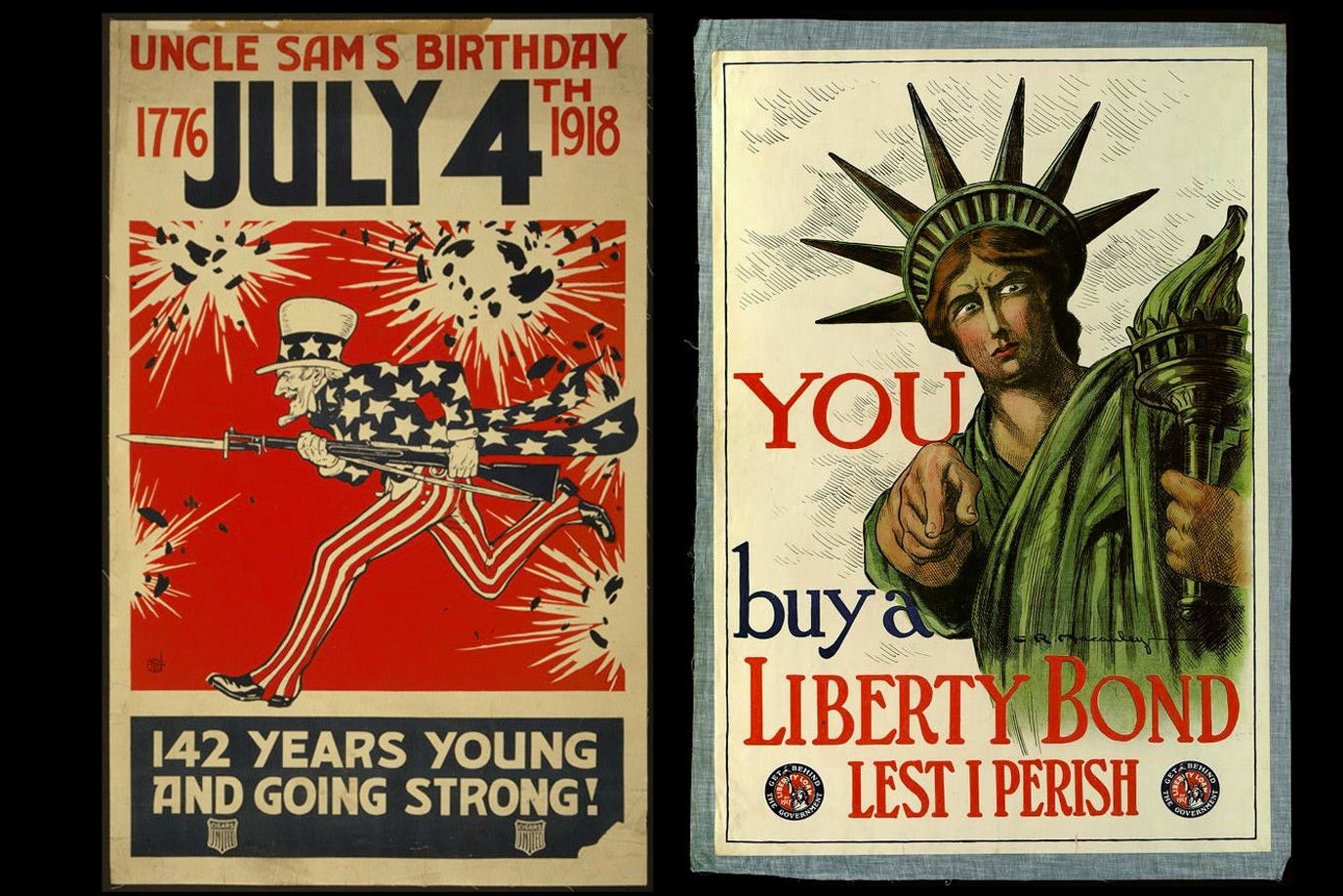
This Fourth of July, in parades across the country, you’ll likely see Uncle Sam and Lady Liberty together, smiling, waving, maybe holding hands. Their jaunty appearance as America’s Odd Couple is as predictable as the parades’ antique cars and marching bands. In fact, the idea of them as a twosome dates back more than a century to when Uncle Sam and (a fairly fierce looking) Lady Liberty first teamed up to sell war bonds and boost enlistment in World War I, and later World War II.
But don’t believe their cheery handholding. Though Uncle Sam was officially recognized as a national symbol in 1950, and Liberty as a national monument in 1924, the truth is that they have always been on opposite sides of the most contentious issues in America, beginning even before the Statue of Liberty’s inauguration in 1886. The job of personified national symbols is to promote a unified citizenry, a task cartoonist Thomas Nast attempted to accomplish in his very first drawing of Uncle Sam in 1869, a sentimental multicultural fantasy he called “Uncle Sam’s Thanksgiving Dinner.” Instead, Sam and Liberty routinely mirror our divisions. The United States is the only country that has two such diametrically opposed personified national symbols. In 2022, this looks like a warning.











